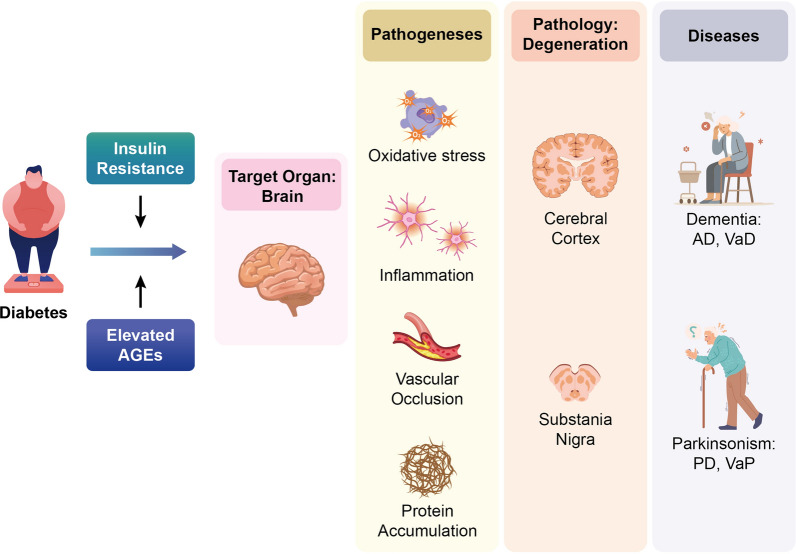Fig. 1.
The postulated mechanism by which diabetes contributes to neurodegeneration in Alzheimer’s disease (AD) and Parkinson’s disease (PD) may involve the accumulation of advanced glycation end products (AGE) and cellular insulin resistance (IR). For the target organ, brain, these two phenomenon lead to inflammation, vascular occlusion, oxidative stress, and the aggregation of pathognomonic proteins, which, in turn, trigger neurodegeneration in the cerebral cortex for dementia, such as AD and vascular dementia (VaD), and the substantia nigra for parkinsonism, such as PD and vascular parkinsonism (VaP)

